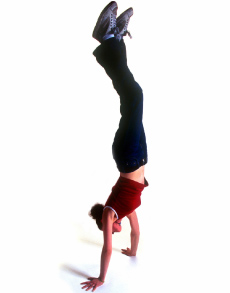Expanding options for kids with cancer
 |
Laura Brown* moves like a typical teenager.
She walks normally and even likes to dance on occasion. But when Brown was 8, she was diagnosed with bone cancer and had surgery to remove the cancerous tumor from her femur.
While Emory orthopedic surgeon Shervin Oskouei worked to get rid of Laura’s cancer, he also spared her leg by inserting a rod, or internal prosthesis, to make up for bone loss. But this wasn’t just any prosthesis. Instead it was an implant that was capable of being lengthened externally with a simple magnet held against the outside of the leg. Over the course of five years, Oskouei regularly saw Laura to expand her prosthesis, finally putting in a permanent implant when she turned 13.
One problem that children may encounter after receiving a prosthetic implant is upkeep. Because the implant must keep pace with the child’s bone growth, successive surgeries are often needed to expand it. With every surgery comes an increased chance of infection and bleeding, along with pain and recovery time.
The magnetic implant minimizes this problem. “The implant allows us to make up for bone we have to take out to remove the tumor, and it grows as the child grows,” says Oskouei. “We can put the prosthesis in, and we don’t have to go back and re-expand it, which would mean multiple operations, more blood loss, and more chance of infection.”
What’s more, the noninvasive follow-up procedures after the initial surgery are less painful because the prosthesis can be expanded often and in small increments. That way the muscles don’t get stretched as much as they would during a traditional surgery.
“It’s a much more comfortable procedure,” says Oskouei, who performed the first expandable tumor implant in Georgia for children with extremity tumors. “In fact, it can be done in the office setting and doesn’t require general anesthesia.”
Emory’s Musculoskeletal Oncology and Limb Reconstruction Center is the only center in Georgia that offers this treatment.
“If I can save a 5-year-old 10 trips to the operating room by the time she’s 13, that’s pretty awesome,” says Oskouei. –Robin Tricoles
*Not her real name

